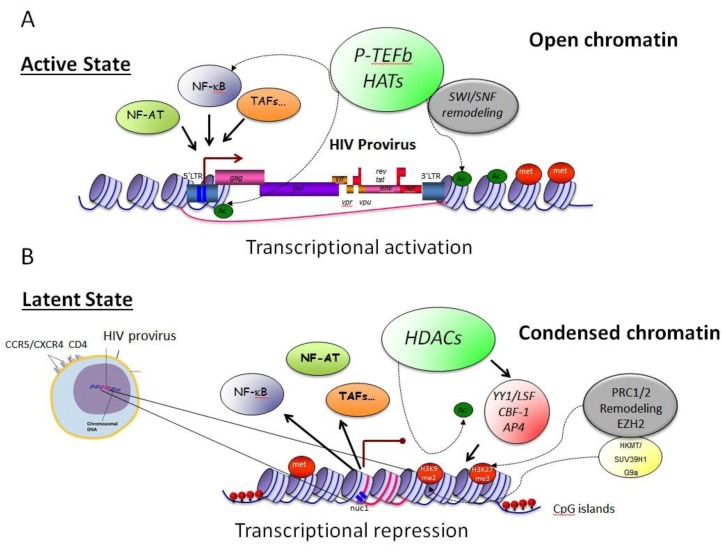Figure 1.
Epigenetic control modulates HIV latency. A) In activated T cells, levels of transcription factors (NFκB and NFAT) are elevated, which increases rates of HIV transcription. NFκB (p50/RelA) is tethered to the HIV LTR and recruits P-TEFb, HATs and the SWI/SNF remodeling machinery. This leads to an overall de-compaction of chromatin and higher accessibility for other transcription factors. B) Upon entering the resting state, low levels of transcription factors, NFκB, NFAT and co-activators, P-TEFb, decrease HIV transcription. They also reduce levels of Tat. Epigenetic modifications in the form of de-acetylation of histones as well as methylation of histones and DNA increase the compaction of chromatin and contribute to repression of HIV gene expression. The polycomb repressive complex-2 (PRC2) mediates methylation of histones and DNA, thus inducing gene silencing. HDACs are recruited via p50 homodimers, CBF-1, YY1, AP4, and/or COUP-TF-interacting protein 2 (CTIP2).

